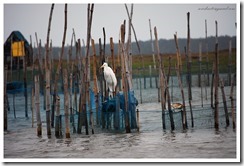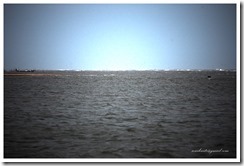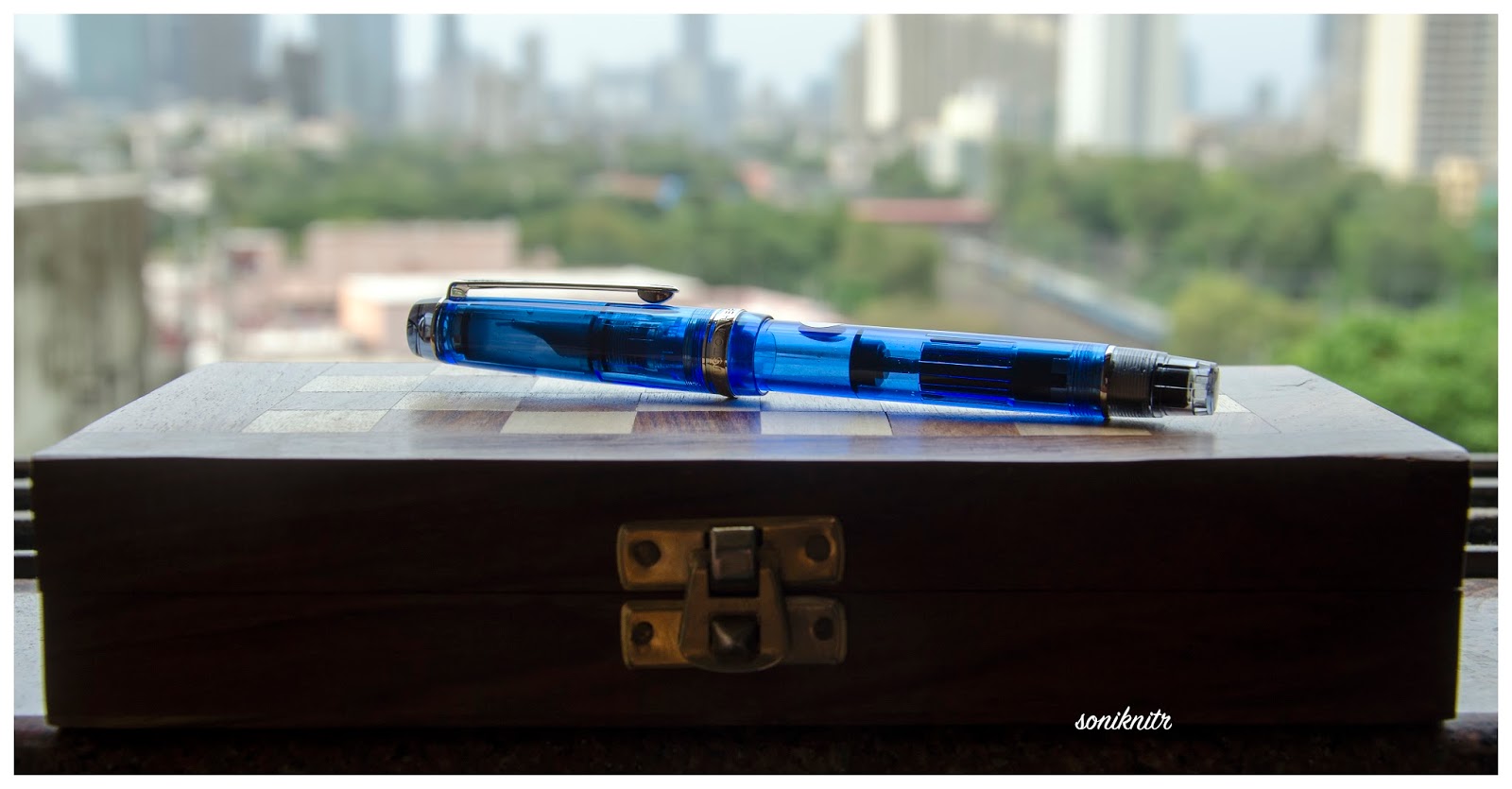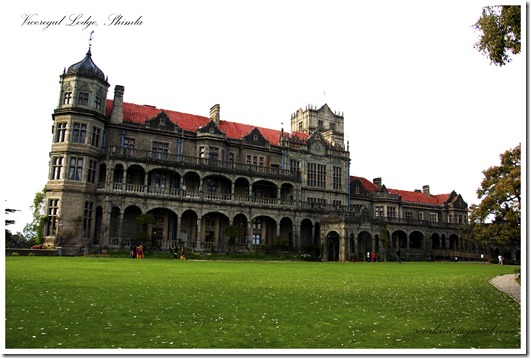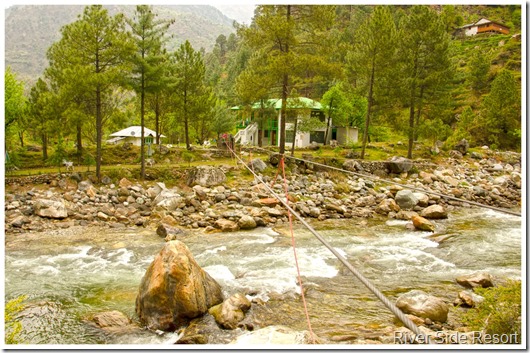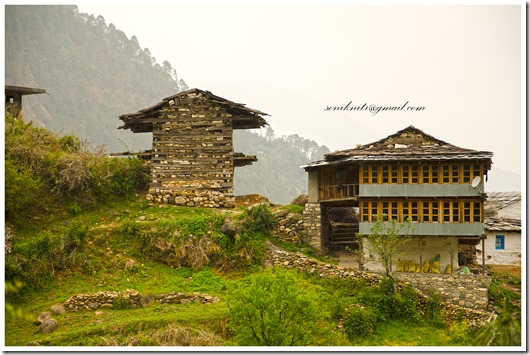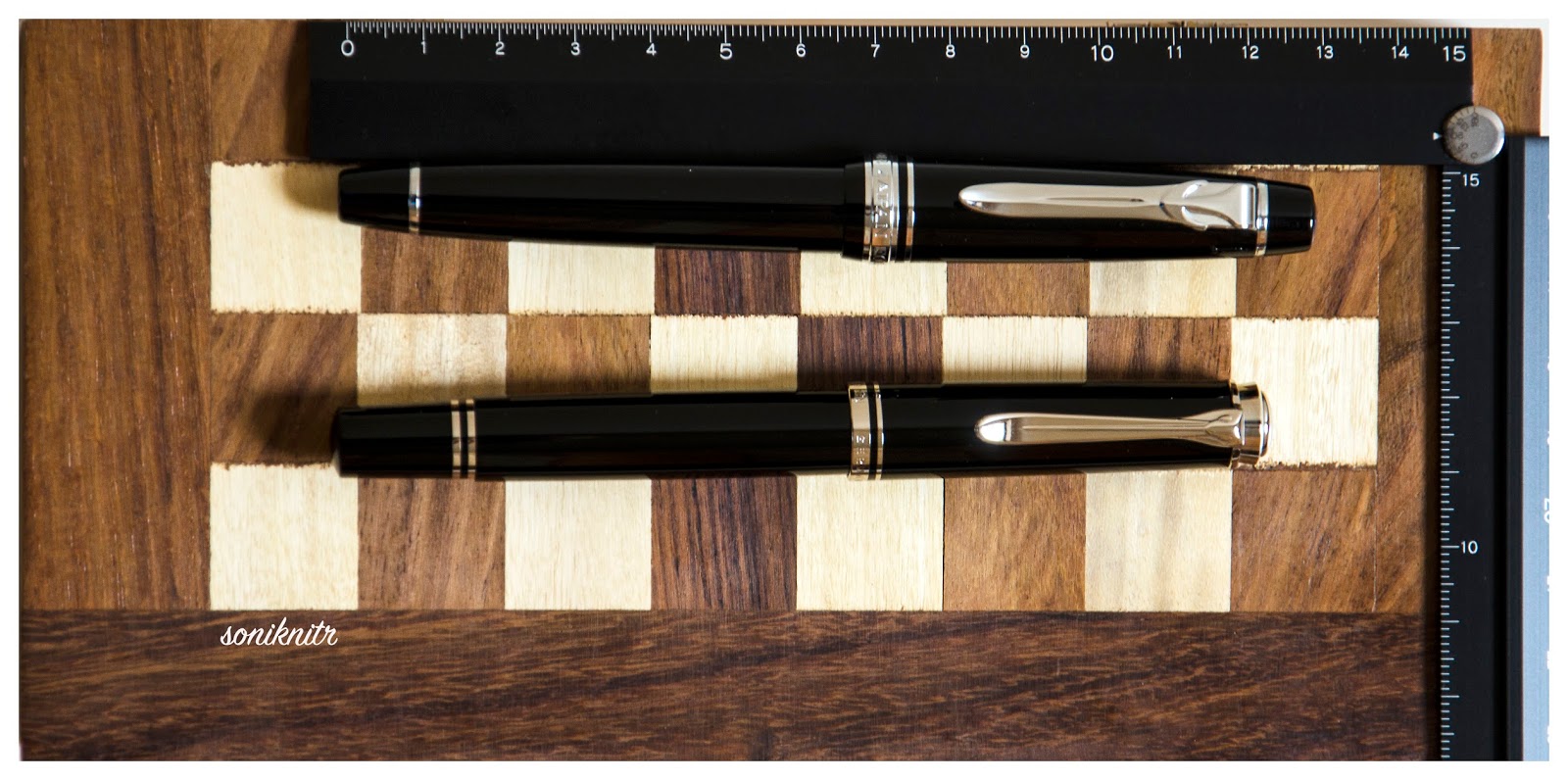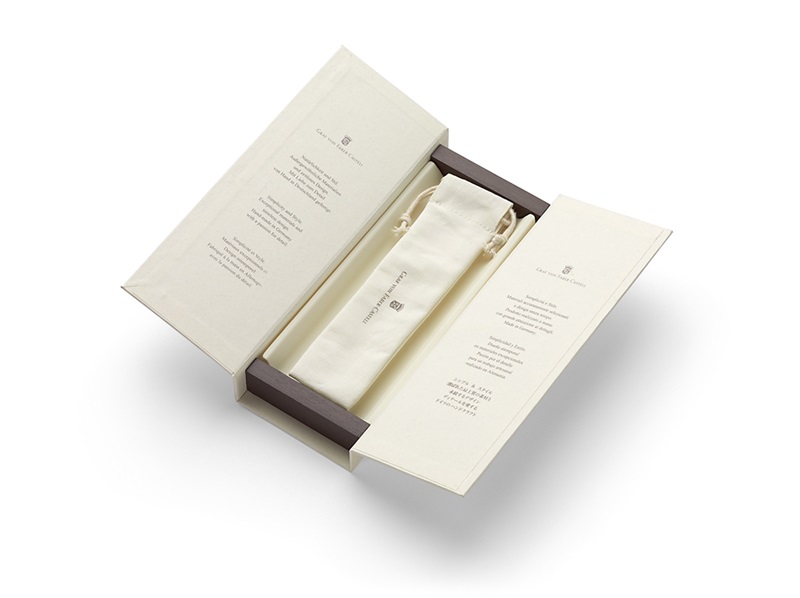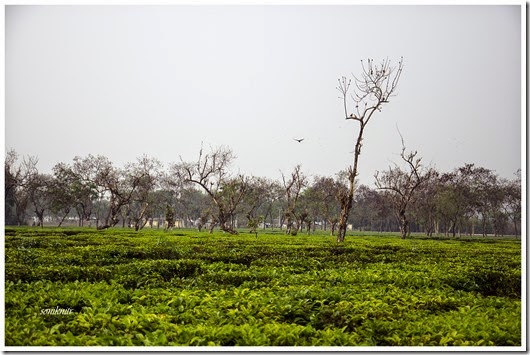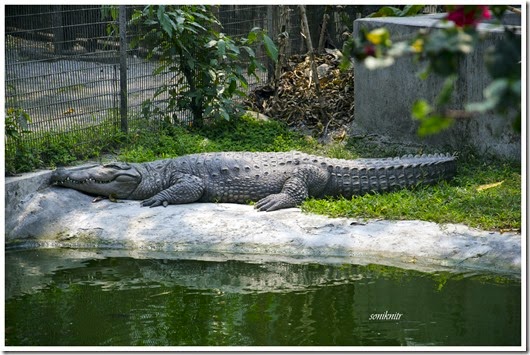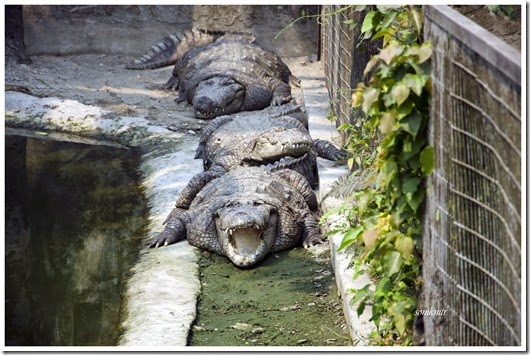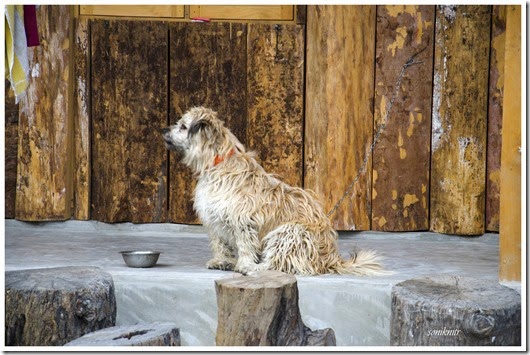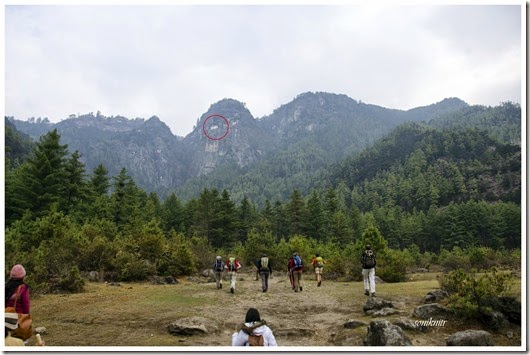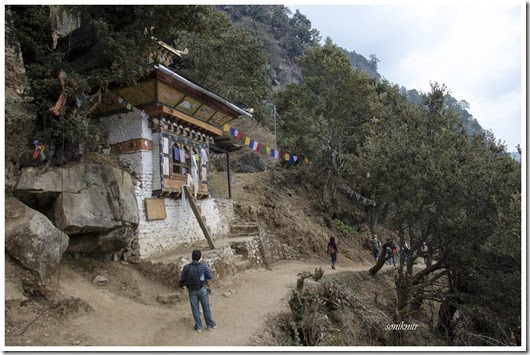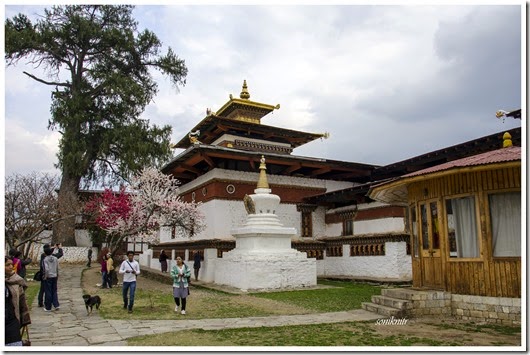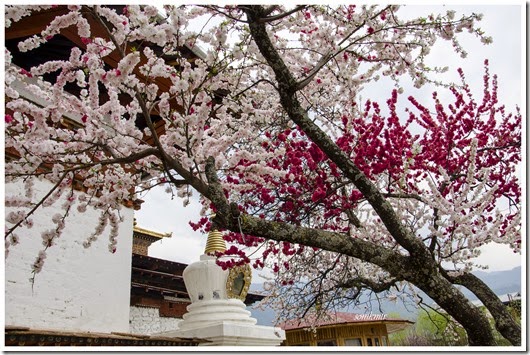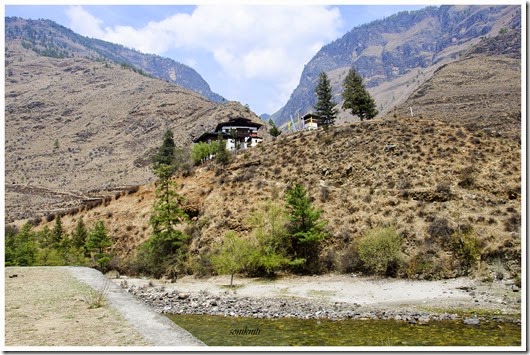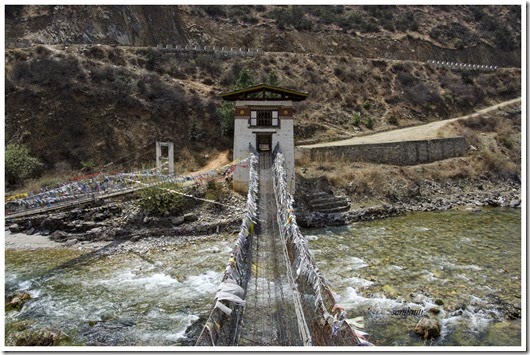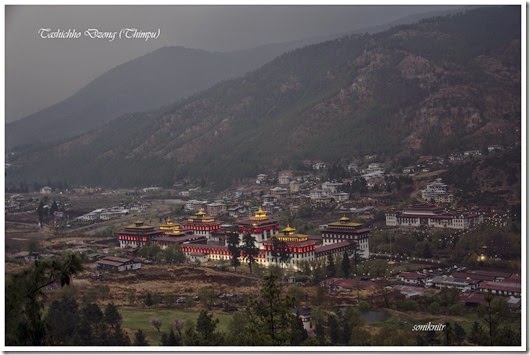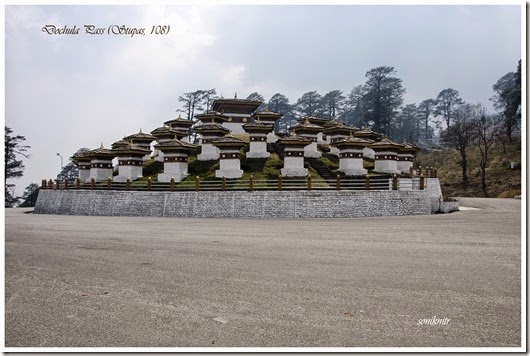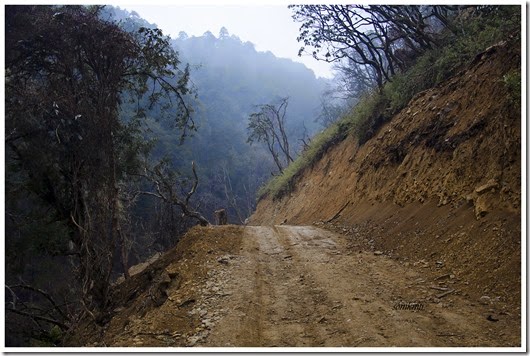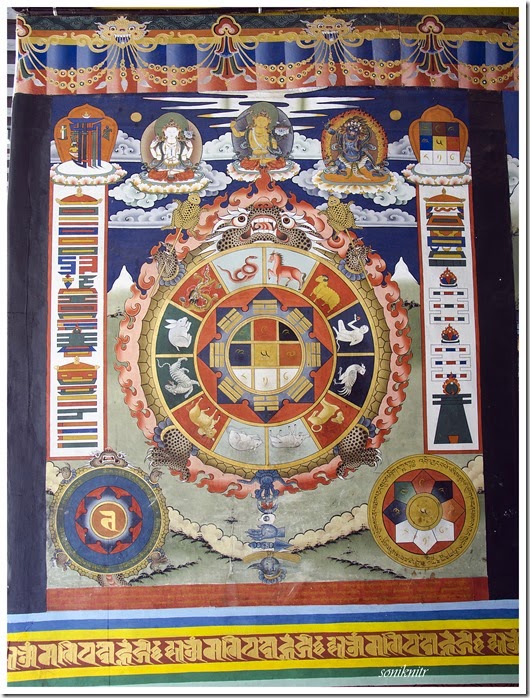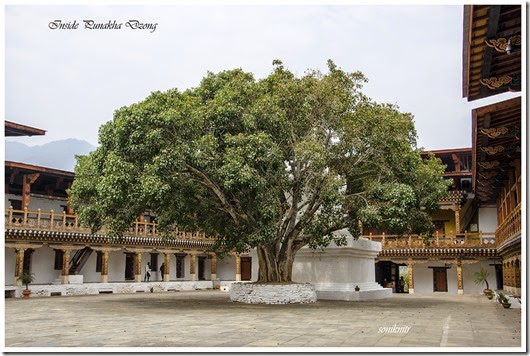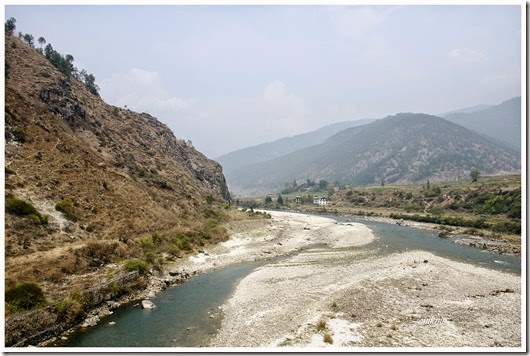MUMBAI – BAGDOGRA – PHUENTSHOLING – PARO – THIMPU – PUNKAKHA – SILIGURI
21/Mar/2015 0430 hrs – mumbai – BAGDOGRA – PHUENTSHOLING
Having wrapped up all office work on the previous night, it was indeed a challenge to pack our bags and then leave for the airport, well before sunrise, on a 9-day long trip. The things that were already in place were return flight tickets(inside India), tourist permits and hotel bookings at 4 cities. The rest of the logistics were to be managed at the world’s happiest nation itself. We had obtained permits from the Royal Bhutan Consulate, well before reaching Bhutan.
Permit
Indian tourists do enjoy some kind of luxury when it comes to a Bhutan visit. You can get a tourist permit either at Paro Airport or Phuensholing Immigration Office (We found the office open till 07:00 PM on a Saturday) or the Royal Bhutan Consulate in India (Kolkata/Delhi). Documents that need to be submitted along with the form, at the Consulate/Phuentsholing Immigration Office constitutes of: 1) Passport Copy/ Voter ID Copy 2) 2-Passport Sized Photographs (keep 4 handy) 3) Completed Bhutan Permit Application Form, along with original documents, for proof.
Secondly, a vehicle permit along with a driver permit can be made with the tourist permits, while you are travelling inside Bhutan. You can rent either an Indian or a Bhutanese Cab. If you wish to visit places beyond Thimpu or Paro, there might be additional permits required from the Immigration Office at Thimpu (Working hours: Mon-Fri), for which usually the cab drivers will coordinate.
CURRENCY
Indian currency is widely accepted across Bhutan along with currency notes of Rs 500/1000 denominations, now. The Bhutanese Ngultrum remains pegged to the rupee with a 1:1 conversion ratio. For credit card transactions, an additional fee of 3.5-4.5% is generally levied by the hotels. Additionally, be mindful of the fact that there is a government tax of 20% levied on hotel bills, over and above the final amount. So you might prefer to carry enough cash with you. (There is a limit on carrying cash - Rs 25000 per person)
After making the lazy ladies get up including my sister and my wife, we could finally manage to leave for Mumbai airport at 05:30 AM, to catch a 07:00 AM flight to Bagdogra (IXB) via Guwahati. It was one of my longest domestic flights (around 5 hrs), and we would be meeting my friend and his wife who were flying from Kolkata.
It was around 1 pm, when we finally landed at Bagdogra, Siliguri (West Bengal, India) and we booked an Innova to take us to the border town of Phuentsholing, Bhutan. We had a delicious lunch at Sinclairs Siliguri on the way, thanks to the couple’s suggestion. I am not entirely sure if it was due to extreme starvation or awesome food preparation, but the chicken manchow soup tasted like heavens there. The drop to Phuentsholing from Siliguri Airport will cost you around Rs 3500-4000. Please keep note of Bhutanese time which 30 min ahead of India, if you are planning to get your permit from Phuentsholing Immigration Office itself. It should take 4-5 hours (180-200 kms) to reach there with some tea-breaks, traffic-jams or an odd stroll in the tea gardens of Siliguri.
![Bhutan 001 Bhutan 001]()
We had some tea with veg-momos at a restaurant nearby (dhaba actually).
![Bhutan 004 Bhutan 004]()
After overcoming the initial traffic blocks at Siliguri which consisted of endless lines of trucks (sometimes landslides block traffic for hours), we indeed had a pleasant journey through the picturesque landscape of North-East India. It was late around 06:30 PM (07:00 PM Bhutan Time) when we reached a gate welcoming us to the Royal Kingdom of Bhutan, at Phuentsholing.
![Bhutan 015 Bhutan 015]()
Getting a local simcard (Tashi Cell) to manage the local logistics part of it was easy, after checking into our pre-booked hotel. Refreshing ourselves with some Bhutanese cuisines for dinner like Shamu/Ema Datsi (Mushroom/Chilli cooked in Cheese gravy), a Bhutanese chicken curry (soup-like) along with some chappatis, we dozed off to a deep sleep. Ema (Chilli) Datsi's side effects were not observed by most of us, until next morning when we sat down on the burning pot. Note that, in all over Bhutan we went, Chilli is an absolute package.![Devil]()
We had done our hotel bookings two months prior to our travel dates. Most of the owners/managers are quite responsive on emails and they would typically ask for a 20-50% advance via bank transfer to an Indian bank account. Tripadvisor did help a lot in our search. One thing to note is that, there is a 20% tax on the total bill (food + accommodation + services), as mandated by the Government of Bhutan.
22/Mar/2015 1030 hrs – PHUENTSHOLING – PARO
Next morning, after having some Indian breakfast (Puri/Bhaji), we booked an Indian cab (from the other side of the border town Jaigon (WB), Ertiga/Innova) for the next 7 days. The rent varies from Rs. 2500-2700 per day for a 6-seater vehicle and we made a part advance payment for the same. While the driver went to get permits for the vehicle from the Transport Office at Phuentsholing, we strolled inside a nearby crocodile reserve, where the Government has been feeding these lazily dangerous animals since 1976, through a special Gharial Conservation Programme.
![Bhutan 023 Bhutan 023]()
Another Yawn…
![Bhutan 025 Bhutan 025]()
Turning some Buddhist Drums clockwise for good luck, we started our Paro journey by 12:30 AM.
![Bhutan 039 Bhutan 039]()
The trip to Paro was accompanied by a much chillier breeze and the clouds obscured the Sun. We passed through some majestic waterfalls with graffiti of Gods & Goddesses on the big rocks.
![Bhutan 064 Bhutan 064]()
After two hours, the visibility deteriorated and we were passing right though cloud tails. It was scenic, somewhat chilly and an enjoyable experience.
![Bhutan 073 Bhutan 073]()
It took us around 5 hours to reach our resort at Paro through these mountain roads along with two or three breaks in between to have lunch and then tea at roadside restaurants. We had a tyre problem and it took around an hour to set it right. In one of those restaurants, we found this cute little dog barking at another, incessantly.
![Bhutan 081 Bhutan 081]()
With some tea, we went on to reach our destination. We had dinner and pre-ordered some Puri-Bhaji for next days breakfast. Taking a stroll afterwards, let us discover an amazingly lit Paro in the evening.
![Bhutan 093 Bhutan 093]()
23/Mar/2015 0830 hrs – PARO – TIGER’s NEST TREK
Early morning, we did meet some American, German and French tourists, on the breakfast table and it seemed that each group had one or two Bhutanese guides with them. Most of them were headed to the Paro Taktsang Monastery. We took some snaps around the resort which had already unfolded a scenic Paro valley at dawn.
![Bhutan 099 Bhutan 099]()
After getting water, chocolates and some light weight edibles for five of us on the way, we reached the basecamp in half and hour time. From the basecamp shops, we picked up two walking sticks for 100 bucks. The Paro Taktsang or Tiger’s Nest is encircled with a red circle in the below picture, and it’s situated at an altitude of 3120 m.
![Bhutan 105 Bhutan 105]()
We took our own sweet time climbing up the terrain, taking frequent water & chocolate breaks and enjoying the peaceful sight of mountains among mountains. Legend has it, that the great Buddhist Master, Guru Rinpoche (Padmasambhava) flew to this location on the back of a tigress and meditated ceaselessly to manifest himself in eight incarnated forms, sometime in the 8th century. The monastery was constructed later in the 17th century.
![Bhutan 109 Bhutan 109]()
One funny thing was that, whenever we asked returning monks and trekkers about the trek that was still left, we never got an answer which amounted to less than two-thirds ![Smile with tongue out]() .
.
![Bhutan 114 Bhutan 114]()
After two hours, we reached the Taktsang Cafe where you can have some tea/coffee along with biscuits. We spent some time at the cafe, which was surrounded by trees at either side, with birds chirping happily.
![Bhutan 133 Bhutan 133]()
Once we came near the monastery, we had a plain easy terrain which later transformed into a series of stony stairs and it started going down, before going up all the way. The sight of the fall and rise was quite demotivating after we had covered all the distance![Steaming mad]() .
.
![Bhutan 135 Bhutan 135]()
Within an hour and a half we reached the Tiger’s Nest through the valley of steps. We had to deposit cameras, bags and other things at a safe-deposit locker, with the security. It is mandated to go in full sleeves inside the monastery, so we put on our jackets. Removing our shoes we visited the various prayer rooms where either Buddha or Guru Rinpoche were worshipped. And then we visited the famed tiger’s nest (Guru Rinpoche’s meditation chamber) which has now been made navigable to an extent by multiple steeply placed wooden ladders.
![Bhutan 143 Bhutan 143]()
Climbing down took us around one and half hours and it was relatively easy. ![IMG_3210 IMG_3210]() The total trek involved walking of around 12 kms but as you can see from the data snap. However, the most difficult part of the trek was the steepness of the mountains. And then we had to take another tea-break at the Taktsang cafe, while descending. We reached our cab and went on to have lunch at a restaurant in the city. It was around 5 pm when our over starved stomachs could receive some hot chappatis with curry.
The total trek involved walking of around 12 kms but as you can see from the data snap. However, the most difficult part of the trek was the steepness of the mountains. And then we had to take another tea-break at the Taktsang cafe, while descending. We reached our cab and went on to have lunch at a restaurant in the city. It was around 5 pm when our over starved stomachs could receive some hot chappatis with curry.
We went on to visit a famous temple at Paro known by the name of Kyichu Lhakhang which is adorned with cherry blossoms. It was again visited by Guru Rinpoche in the 8th century, which means more mystery to the place.
![Bhutan 149 Bhutan 149]()
![Bhutan 151 Bhutan 151]()
We went back to our hotel rooms and after having a light dinner we fell asleep with peace.
24/Mar/2015 0930 hrs – PARO – THIMPU
Next morning, before we diverted towards Thimpu, we visited a few more locations at Paro: Rinpung Dzong, National Museum of Bhutan and a monastery beside Paro Chhu (Chhu means water in Bhutanese) known as Tamchhog Lhakhang, on our way.
![Bhutan 167 Bhutan 167]()
![Bhutan 179 Bhutan 179]()
The Tamchhog Lhakhang Monastery is located on a hill encapsulating the chilly waters of Paro Chhu. There are two wire bridges to help you cross to the other side of the river and reach the monastery.
![Bhutan 193 Bhutan 193]()
By lunchtime, we had arrived at Thimpu. After a sumptuous lunch at the checked-in hotel, we started with a few visits to nearby places later in the afternoon. The weather had gradually transformed into an overcast sky by the time we had reached the Buddha Point. One of the largest Buddha rupas in the world, the statue is made of bronze gilded with gold, measuring a whopping 52 meters. And, the clouds enclosed within the Himalayan ranges with distant snowcaps, reflecting on the statue, give Buddha a rather majestic look.
![Bhutan 199 Bhutan 199]()
In a few minutes, it started raining, and we were soon greeted with a light hailstorm. We took a break at a higher mountain which revealed a partly lit Tashichho Dzong and it warmed our hearts in this cold chilly rains of ice.
![Bhutan 208 Bhutan 208]()
With ice melting on our jackets, we returned to our hotel rooms to warm ourselves up, with a silent enthusiasm to take on the next day’s trek.
25/Mar/2015 1000 hrs – THIMPU – CHERIE MONASTERY
A 20 km drive to the north of Thimpu valley, took us beyond some charming snow-caps and black mountains, towards the base of Cherie Monastery. Along with Tango monastery on the other mountain, this serves as a monastic school for study of mathematics, philosophy and sciences for Buddhist students. As one of the monks told us, a student after 9 years of study at Tango monastery graduates to Cheri Monastery, for 3 more years of specialization. Till then he is allowed to come in social contact with other people. Then post specialization from Cherie, he goes to a higher mountain, devoid of social contact, to concentrate solely on the spiritual realms of existence. There is a temple at the base of the Cheri mountain, from where we started the short trek, after crossing a small foot-bridge.
![Bhutan 213 Bhutan 213]()
The trek took us about an hour though the exquisite overlapping of Himalayan mountain ranges.
![Bhutan 231 Bhutan 231]()
Cheri Monastery is said to have visited by Guru Rinpoche in the 8th century itself, long before its construction in 1620. And the mountains and the skies do possess a mystic equilibrium for the human mind.
![Bhutan 233 Bhutan 233]()
We were greeted by some mountain goats grazing lazily on the greener grass. There was a giant pet dog of the monastery who greeted us by showing us the door to the monastery.![Bhutan 236 Bhutan 236]()
We took some drinking water from the monastery, ![IMG_3221 IMG_3221]() after paying our respects to Guru Rinpoche. The return journey did not take much time and we reached the base, after a short while. There is a small river flowing at the base of both the mountains which house Tango and Cherie monasteries. Effectively, it was a two and half hour short trek, which was made to last three hours due to our frequent breaks. The steepness of Tiger’s nest was missing, as our feet had some comfortable plains to cover here.
after paying our respects to Guru Rinpoche. The return journey did not take much time and we reached the base, after a short while. There is a small river flowing at the base of both the mountains which house Tango and Cherie monasteries. Effectively, it was a two and half hour short trek, which was made to last three hours due to our frequent breaks. The steepness of Tiger’s nest was missing, as our feet had some comfortable plains to cover here.
Then onwards we went to visit the Takin Reserve, which preserves the national animal of Bhutan. Legend has it that a Tibetian saint conjured the first Takin from the head of a goat and the skeleton of a cow, and then onwards it was seen grazing among the Himalayan mountains. Though nothing spectacular in itself, we did get an opportunity to cover some of the beautiful landscapes enclosed by the snowcaps.
![Bhutan 266 Bhutan 266]()
In the evening, we went on to visit the flag hoisting ceremony at Tashichho Dzong. The Dzong opens to public after official hours. There are various administrative offices, temples and staff quarters inside the campus. One of the temples is open to public as you can see below.
![Bhutan 286 Bhutan 286]()
26/Mar/2015 0930 hrs – THIMPU – PUNAKHA – DOCHULA PASS TREK
We checked out of our hotel at Thimpu with loads of happy experiences of lovely Indian food along with Bhutanese delicacies. Enroute to Punakha (the old capital of Bhutan) we had to go via Dochula Pass. This memorial of 108 chortens were built in 2003 by the Queen Mother to honour the Bhutanese soldiers who were killed fighting Indian rebels.
![Bhutan 296 Bhutan 296]()
There is a temple on the opposite hill, which faces the memorial. The temple does stand tall upon a hill, with pillars placed on its circumference.
![Bhutan 303 Bhutan 303]()
![Bhutan 307 Bhutan 307]()
At around 11:15 AM, we started one of the long treks which went up to Lungchu Tsey Monastery. Navigating through dense forests, steep slopes, slippery terrain and colourful flower beds, it took us around 3 hours to reach the highest point housing Lungchu Tsey monastery, at 3556 m altitude. With an overcast sky, this was one of the steepest treks we undertook, and then we had to to get down at the other side of the mountain which was situated at a distance of 5 kms by road.
![Lungchu Tsey Lungchu Tsey]()
Once we saw the monastery we were dazed by its coolness and serenity. A kind monk came down to greet us along with three pet dogs of the monastery, who escorted us further towards the prayer room on the top. We could notice some beautiful flowers in the vicinity and we met some other monks who spoke in Bhutanese, of which we could understand none.
![Bhutan 325 Bhutan 325]()
Then paying my respect to Guru Padmasambhava, I placed a small petal picked up earlier during the trek, on the altar. Innately we all had the feeling of completing the trek, due to his blessings. Then the divine calling for tea with some biscuits were heard and transmitted by this kind monk. We then could muster enough energy to start our journey towards the other end of the mountain.
![LTsey-2 LTsey-2]()
When we started trekking down, a slow hailstorm ![IMG_3240 IMG_3240]() began its course and our jackets, bags were drenched with melting ice. Palms and feet had gone numb and some of us heard cries of wild animals. Someone had earlier warned us against testing our luck against these wild animals. Walking through darkness of clouds and muddy slippery terrain, we tried to hurry through the rest of the journey but our feet would not allow us to do so. We covered a total of 16.28 kms before we could spot our car waiting for us. We went downhill via Tashigang Gumba and walked almost continuously for two and half hours with limited breaks. The last of our chocolates were finished on our way back.
began its course and our jackets, bags were drenched with melting ice. Palms and feet had gone numb and some of us heard cries of wild animals. Someone had earlier warned us against testing our luck against these wild animals. Walking through darkness of clouds and muddy slippery terrain, we tried to hurry through the rest of the journey but our feet would not allow us to do so. We covered a total of 16.28 kms before we could spot our car waiting for us. We went downhill via Tashigang Gumba and walked almost continuously for two and half hours with limited breaks. The last of our chocolates were finished on our way back.
Finally we could see a muddy road connecting to the main road and we could see a cab from this side of the hill. And it was indeed a mirage, it took us another 20-25 minutes around the mountains, before we could reach the main road.
![Bhutan 339 Bhutan 339]()
With almost immobile feet we boarded the cab, when we started towards Punakha. In two and half hours we reached Punakha as the road blocks were removed after 05:30 PM, in the evening. We had a forgettable dinner at a restaurant before reaching our hotel. It is located in Wangdue (pronounced Wangdee) which is again at a upslope distance of 45 minutes from the main town.
27/Mar/2015 1030 hrs – PUNAKHA
This day was our penultimate day in Bhutanese soil, for we had a long journey till Siliguri the next day. We visited the Punakha Dzong which was the administrative center of the nation till 1955. The Dzong is located at the confluence of two rivers – Po Chhu (father) and Mo Chhu (mother). Inside the Dzong are administrative settlements and it’s home to one of the royal bloodlines. We found this Buddhist Wheel of Life again, (bhavacakra) painted on one of the outside temple walls.
![Bhutan 368 Bhutan 368]()
![Bhutan 371 Bhutan 371]()
We took a small walk toward the other end of the Dzong to have a look at the longest suspension bridge of Bhutan, which should measure around 200 meters. It was fun crossing the bridge, to have some locally manufactured mango drink at the other side.
![Bhutan 384 Bhutan 384]()
![Bhutan 387 Bhutan 387]()
It turns out to be quite an amazing view when you look at the meanderings of the river against these mountains.
![Bhutan 393 Bhutan 393]()
On returning to our hotel in the afternoon, we did some local scouting to get the sim recharged. With some refreshing tea, we rested our legs on the rocks surrounding Dangchu river. At around 10 pm in the night, we came to know of the absence of credit card facility of the resort and had to take the hotel car to get cash from an atm in the town.
28/Mar/2015 0630 hrs – PUNAKHA – PHUENTSHOLING – SILIGURI
Next morning, we had to bid goodbye to Bhutan and start our journey back home. We left quite early in the morning as there were several blocks in Punakha, owing to road work. We had to stay at a block for 1.5 hours before, going through the clouds. A late breakfast at Thimpu rejuvenated us and we managed to reach Phuentsholing at around 04:30 PM. Paying rest of the bill for the cab, we took another cab leaving the Himalayan Kingdom, to reach Siliguri at around 08:30 PM.
![Bhutan 410 Bhutan 410]()
We all had next morning flights back home from Bagdogra airport. All I could recall during sleep, was an old path with white clouds.
19°43′N 85°19′E
 coconut milk from one of the roadside vendors who was still disappointed with the bargained sale. Seasonal flowers adorning the path throughout the curvature, emphasized the mystic elegance of a sojourn in more colourful ways than the rainbow itself. The scenic landscape kept evolving with the grazing of cows, the ablution of buffaloes in roadside canals and the solitary activities of farmers tending to their crops. It took around three hours to reach the region of Satapada, which actually signifies convergence of Chilika with the Bay of Bengal. It was once a modern human effort to improve the estuarine eco-system of the lake.
coconut milk from one of the roadside vendors who was still disappointed with the bargained sale. Seasonal flowers adorning the path throughout the curvature, emphasized the mystic elegance of a sojourn in more colourful ways than the rainbow itself. The scenic landscape kept evolving with the grazing of cows, the ablution of buffaloes in roadside canals and the solitary activities of farmers tending to their crops. It took around three hours to reach the region of Satapada, which actually signifies convergence of Chilika with the Bay of Bengal. It was once a modern human effort to improve the estuarine eco-system of the lake. On reaching the quay in Satapada, we pre-ordered lunch for everyone in one of the restaurants and hired a family-type boat for Rs. 1800. Later, we found that the lunch would cost us even more. These family boats have a typically native wooden construct, with coarse and unfinished planks of wood, both for keeping the boat afloat and making passengers sit. A leather cushion may have been provided on the plank, so that it hurts a little less once you take your place, unless of course you have completely overwhelmed the BMI barriers. And yes, that little flimsy piece of cushion sways with the breeze. The only thing that has some machinery on the boat, is a small cantankerous diesel engine which can break all sound barriers within moments of ignition. The rotor blades are the only companions which make the boat go a wee bit faster than normal human swimming speed. And also with some persistent request, the boatmen did bequeath us with a torn and shiny tarpaulin to create a shed against the glare of the afternoon Sun. Aesthetics of these boat might have crazy shortfalls in almost all aspects, but once you embark it, the icy breeze and the pulsating water will make you forget everything else. And believe it or not, the ride was wonderful.
The second part of the journey was on water, with brief and enjoyable halts at different places. Small islands, famous for sightings of bright red crabs, which were nowhere to be found; different speciesof birds that swayed with the wind, seagulls with their usual acrobatics and Great Egrets with their unusual concentration to carry on with their eternal activity of aiming, catching and eating fishes. The Great Egret has its sole destiny centered on, standing still for hours and allowing some unfortunate fish to come within striking distance of its bill, which it will then use as a spear to kill and devour the underdog. Through the mists of the breathless wind, the boat crossed stretches of small hills, small independent settlements of fishing-folks and thousands of birds including the greedy Great Egrets. Then it advanced towards a stretch of a lake, which somehow appealed to Irrawaddy Dolphins, in particular. Only one or two of the one hundred and sixty did care to show their
flat-nosed mocking face after a still water wait of around 20-25 minutes and after shutting down the cankerous engines. Then we advanced on our voyage towards the sea mouth, where the lake plunges into the Bay of Bengal. The high tides at the dusky horizon gleamed with an amazing epilogue which is quite impossible to capture with even a powerful lens. This was a conclusive part of sojourn with six weary travellers growing impatient with the available potato chips and finally disembarking the boat to hurry towards the overpriced restaurant for having the pre-ordered overpriced lunch. Hunger improved the taste and presence of close ones made it fun. A day which engendered pure fun and frivolity, made us feel content and joyous with a sense of adventure, discovery and merriment.
 19°43′N 85°19′E
19°43′N 85°19′E 

